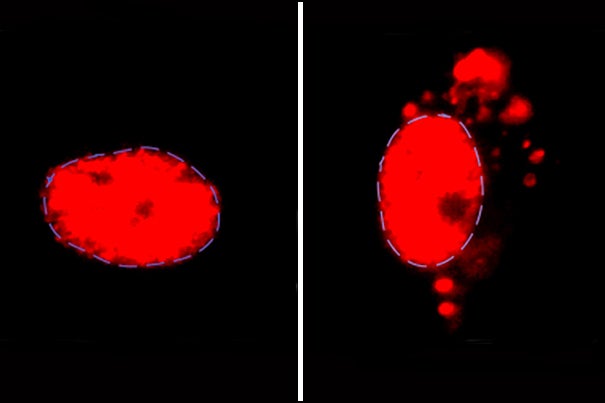
Harvard Medical School researchers identify new targets to inhibit viral replication and may inform the development of a new class of antiviral drugs.
iStock
Catch a virus by the tail
Study uncovers key mechanism that allows some of the world’s deadliest viruses to replicate
Viruses are masterful invaders. They cannibalize host cells by injecting their genetic material, often making thousands of copies of themselves in a single cell to ensure their replication and survival.
Some RNA viruses — viruses whose RNA, not DNA, carries their genetic information — insert their genetic material into cells as a single piece, while others chop it up. The latter are aptly named segmented viruses.
Such segmented RNA viruses, including several that cause human diseases like influenza, have long been an enigma to researchers: How do they accomplish the precise copying and insertion of each segment? How do they ensure that individual segments are all copied by the same enzyme and that each segment can make different amounts of RNA? Such exquisite regulation is critical to making the correct levels of the viral proteins necessary for successful replication.
Now research by scientists at Harvard Medical School’s Blavatnik Institute yields a surprising answer: The viral machinery in charge of this survival-ensuring maneuver becomes activated by RNA from the tail end of the segment, opposite to where the copying starts.
The findings, published May 9 in PNAS, identify new potential targets to inhibit the replication of segmented viruses. This group includes several emerging and highly fatal viruses such as Lassa fever virus, bunyaviruses like La Crosse and Rift Valley fever, as well as the better-known and more common influenza viruses.
“Climate change has altered and intensified the spread of some serious and emerging viruses to new geographic regions, creating an acute challenge to global health. Our findings identify a critical mechanism that allows some of these pathogens to replicate and survive,” said Sean P.J. Whelan, professor of microbiology at HMS and director of the Harvard Program in Virology.
Being infected with the Lassa fever virus, for example, is rarely fatal, but once the actual disease develops, it can cause hemorrhaging in multiple organs in one out of five people. The mortality rate can reach 50 percent during epidemics, according to the Centers for Disease Control and Prevention.
In the study, Whelan and his co-author Jesse Pyle, a graduate student in his lab, worked with the Machupo virus, an arenavirus that, like Lassa virus, infects rodents, which transmit the virus to humans, in whom it can cause fatal hemorrhagic fevers.
Unlike the flu virus, whose genome has eight segments, the Machupo virus has only two segments — called small and large segments — offering a much simpler way to understand how segments are copied in the correct amounts.
Previous clues about this mechanism came from research on influenza and La Crosse viruses that showed the viral protein responsible for copying the key segment — RNA-dependent RNA-polymerase (RdRP) — interacted with the 5′ end of the segment, which is the exact opposite end to the location where the protein initiates copying. Yet, the importance of this interaction was not fully understood.
The experiments revealed that mixing short 13-nucleotide RNAs from the 5′ end of the Machupo virus segments with the RdRP, the catalyst that initiates RNA replication, stimulated the ability of this enzyme to copy the viral segment. The two-segment Machupo virus contains four subtly different 5′ RNAs that each bind the RdRP enzyme. Remarkably, the scientists observed, those RNAs dictate which of four different start sites the enzyme actually uses.
Whelan and Pyle say these results not only shed light on an important question in basic virology, but also identify a target that may illuminate how to develop of a new class of antiviral drugs directed at this essential 5′ RNA activation.
Most antiviral drugs currently on the market target viral enzymes involved in replicating genetic material or in the processing of viral proteins. None, however, interfere with the particular mechanism described in the current study.
“Our work demonstrates that both the 5′ RNA and its binding site on the viral enzyme are potential new targets for inhibition of viral replication,” Whelan said. “An important next goal would be to hunt for molecules that interfere with this process and set the stage for new drug design.”
This research was funded by National Institutes of Health.






